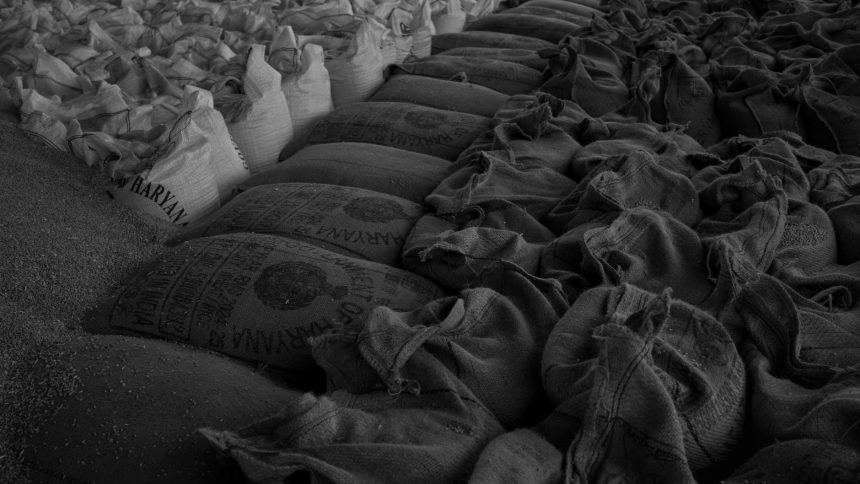Reducing Food Loss in Supply Chains
Reducing Food Loss in Supply Chains: Innovations Driving Efficiency
The global challenge of food loss is immense, impacting economies and food security. Fortunately, innovative solutions are emerging to tackle this critical issue. This article explores the cutting-edge strategies and technologies revolutionizing how we reduce food loss throughout the entire supply chain, from farm to fork.
Understanding the Scope of Food Loss
Food loss refers to the decrease in edible food mass, occurring at all stages of the food supply chain from agricultural production up to, but not including, the retail level. This staggering problem results in wasted resources like land, water, and labor, alongside significant economic losses and increased greenhouse gas emissions.
Key Stages Where Loss Occurs
- On-Farm Losses: Pest infestations, weather events, and inefficient harvesting techniques.
- Post-Harvest Handling & Storage: Inadequate storage facilities, temperature fluctuations, and poor handling.
- Processing & Packaging: Technical malfunctions, spoilage during processing, and damaged packaging.
- Distribution & Transportation: Refrigeration failures, delays, and damage during transit.
Technological Solutions for Food Loss Reduction
The integration of advanced technologies is proving instrumental in mitigating food loss. These solutions offer enhanced monitoring, better control, and more efficient operations.
Leveraging AI and IoT for Smarter Supply Chains
Artificial Intelligence (AI) and the Internet of Things (IoT) are at the forefront of transforming supply chain management. By connecting devices and analyzing vast amounts of data, these technologies provide real-time insights and enable proactive decision-making.
AI-Powered Logistics and Demand Forecasting
AI algorithms can predict consumer demand with remarkable accuracy, allowing for optimized inventory management and reduced overproduction. Furthermore, AI-driven logistics can identify the most efficient routes and modes of transport, minimizing transit times and potential spoilage.
IoT for Real-Time Monitoring
Sensors deployed throughout the supply chain can monitor critical parameters such as temperature, humidity, and location in real-time. This data, accessible via IoT platforms, alerts stakeholders to deviations that could lead to food spoilage, enabling immediate corrective action.
The Role of Advanced Storage and Packaging
Improvements in storage infrastructure and packaging materials are also crucial in preserving food quality and extending shelf life.
Modular Storage Hubs
The development of modular and scalable storage solutions allows for flexible deployment, particularly in regions with less developed infrastructure. These hubs can be equipped with climate control technologies to maintain optimal conditions for various food products.
Smart Packaging Innovations
Innovative packaging solutions, including active and intelligent packaging, can actively monitor food freshness, release preservatives, or indicate spoilage. This not only helps reduce waste but also improves consumer safety.
Strategic Approaches to Minimizing Waste
Beyond technology, strategic planning and collaborative efforts are vital for a comprehensive approach to food loss reduction.
The Importance of Data Analytics
Collecting and analyzing data from every stage of the supply chain is essential for identifying bottlenecks and areas of significant loss. This data-driven approach informs targeted interventions and continuous improvement efforts.
Collaboration Across the Value Chain
Effective food loss reduction requires collaboration among farmers, processors, distributors, retailers, and even consumers. Sharing information and best practices fosters a more resilient and efficient food system.
The Future of Food Loss Prevention
The ongoing advancements in technology and a growing global awareness are paving the way for a future with significantly reduced food loss. Continued investment in research and development, coupled with supportive policies, will be key to achieving this goal.
Call to Action
Explore how these innovative solutions can be implemented in your operations to contribute to a more sustainable and efficient food future. Learn more about sustainable agriculture practices and supply chain optimization.
© 2025 thebossmind.com
Reducing Food Loss in Supply Chains
Reducing Food Loss in Supply Chains: Innovations Driving Efficiency
The global challenge of food loss is immense, impacting economies and food security. Fortunately, innovative solutions are emerging to tackle this critical issue. This article explores the cutting-edge strategies and technologies revolutionizing how we reduce food loss throughout the entire supply chain, from farm to fork.
Featured image provided by Pexels — photo by Swastik Arora





